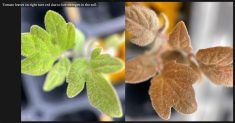University of Washington prof thinks it’s possible that regenerative agriculture practices could increase food quality
There’s tantalizing evidence that regenerative agriculture practices might be boosting the healthfulness of food produced on that land, says David Montgomery.
More research should be done on the question of whether soil health has an impact on the nutritional value of crops and livestock, said Montgomery, a pioneer in the concept of “soil health,” the author of the hugely influential book Dirt and a professor at the University of Washington.
“It’s an invitation for a lot more work.”
Montgomery and fellow researchers recently conducted a “very preliminary” study looking at the differences between crops produced in conventional systems and those produced in regenerative farming.
Read Also

Organic farmers urged to make better use of trade deals
Organic growers should be singing CUSMA’s praises, according to the Canadian Chamber of Commerce.
They found a general phenomenon of regenerative land producing crops with more B vitamins and vitamins E and K, as well as a number of micronutrients.
Land from similar farming areas was compared.
Regenerative agriculture is a loose term that generally refers to farmers employing diverse crop rotations, growing cover crops and often integrating grazing as a means of both preserving soil and improving its biological activity.
Montgomery said this study is not enough to prove anything by itself.
“The small sample size of the study really is its fundamental weakness … but it’s certainly highly suggestive,” he said.
Montgomery has been working on an upcoming book, What Your Food Ate, which looks at the question of how the soil and feed sources for crops and livestock affect the quality of the grain and meat produced from consuming them.
This study arose from Montgomery’s observation that nobody seemed to have conducted a close investigation of how soil health impacted crop and livestock quality. If nobody else had looked at it yet, Montgomery thought it was worth glancing at with the hopes that other researchers will pick up the ball and do a more rigorous study.
“It’s a test-of-idea paper that suggests there is a lot to this idea,” said Montgomery, whose paper was published in PeerJ Jan. 27.
“Soil health might be affecting what’s getting into our food in ways that may matter for human health.”
















